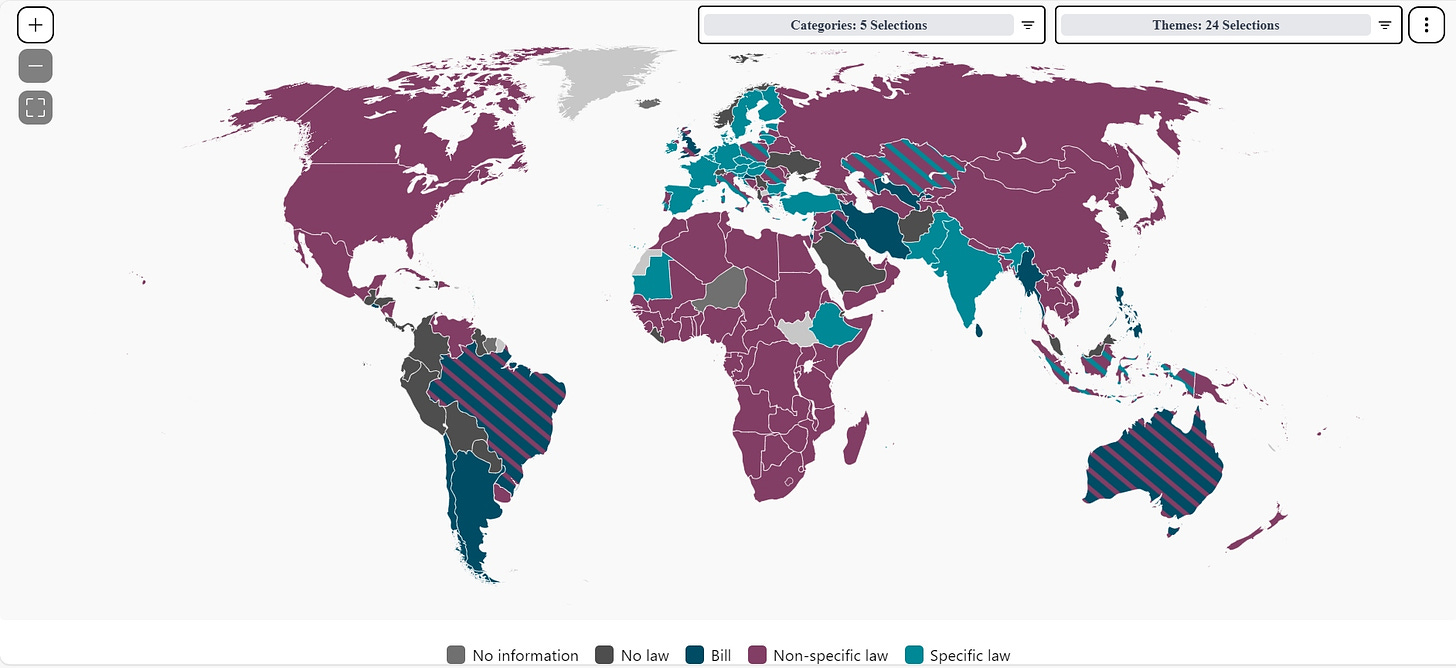The 184th Block: Research said we can tell apart real and pretend faces. I don't believe it
React to this newsletter with emoji only
This week…
Your reading time is about 7 minutes. Let’s start.

Hanaa’ Tameez and Nieman Lab talked to 13 news publishers, including Argentina's La Nación, Times of India, and CNN en Español, about their experience using WhatsApp Channel to share the news. Of note, FT said it took them a year to reach 35,000 followers on Telegram, but just two weeks to get to a similar figure on WhatsApp Channel.
In measuring audience reception, La Nación’s chief editor of social media Andrés Krom said in the article, “We can only see the approximate number of people who viewed a post, as well as the quantity of each emoji reaction they used.” You’d be surprised at the common emoji reactions for U.S. publications like FT, Vox, and The Atlantic. (Hints: They're flags. But not the U.S.)
Similarly, Mar Manrique in Fleet Street profiled (in Spanish) the use of WhatsApp Channels by Spanish outlets elDiario.es, Xataka, and Vogue Spain. Because of the unidirectionality of the Channel function, the outlets, too, measure the success of their communication, to an extent, through emoji reactions.
The Fleet Street piece brought my attention to another newsletter, A Curious Eye on Europe by Isabel Hummel, which also, earlier this month, examined the use of WhatsApp Channel by several European media organisations. The journalist looked at media channels from Germany, France, Italy, Spain, and the U.K., including Correctiv, Le Monde, El País, Rai, and the BBC, and demonstrated similarities (and some exceptions).
Of course, having mentioned all this, I would like to plug The Continent, which I have recommended in “The 140th Block.” ICYMI, it is a free-to-read, free-to-share pan-African digital paper optimised for reading and sharing on messaging apps. In circulation since 2020, the initiative by Adamela Trust with the South African newspaper Mail & Guardian said that “by using the same viral networks exploited by disseminators of disinformation, the publication aims to counter the fake news on people’s phones with real news.” I do wonder how WhatsApp Channel could change its dissemination and engagement.
And now, here’s a selection of top stories on my radar, a few personal recommendations, and the chart of the week. I don’t know when we started having this unofficial rule, but whenever AI makes the list of extracted stories on TSB, you know you’ll always get a 2-1 split of bad-good stories, but good news(?) because this week, the split is 2-1 good-bad. (I think. You tell me.)
ICYMI: The Previous Block recommended a few Substacks in French, Spanish, and Portuguese; then the mess and method of AI, per usual. CORRECTION NOTICE: None notified. Asian runway model says AI was used to make her look white
Noor Al-Sibai for Futurism:
[Shereen Wu] posted a screenshot in her video of [Michael Costello’s] lengthy non-apology, where he said there was “nothing [he] could do” about the poorly edited image, told her he’d cast her in his show because he “liked” her, and pointedly did not apologize.
“I understand as a model, I am replaceable,” Wu said in her video. “But I don’t get paid to do these shows, [and] while I don’t get paid, there’s a tacit understanding that I’m doing this for exposure and for photographs."
In an interview with The Guardian about the debacle, the model said that because her face was essentially replaced in the edited photo, she didn’t even get “paid in exposure” — which is her only way of getting her name and face out there as an independent model who isn’t signed to any agency.
“I didn’t get exposure, because this is an edited photo,” she told the British newspaper. “By cutting off my head, neither did the makeup artist, hairdresser or photographer. That’s what peeves me so much.”
Creatives cannot even get paid in “exposure” these days.
AI-generated faces look just like real ones – but evidence shows your brain can tell the difference
University of Lincoln’s Robin Kramer for The Conversation:
These results suggest there is a distinction between how we behave and what our brains “know”. On the one hand, participants couldn’t consciously tell synthetic faces from real ones, but on the other, their brains could recognise the difference, as revealed by their EEG activity.
Although it may be surprising to think that our brains have access to information that is outside of our conscious awareness, there are many examples of this in psychology.
For instance, blindsight is a condition typically found in people who are blind in one half of their visual field. Despite this, they may be able to respond to objects placed on their blind side that they deny being consciously aware of.
Can you tell which faces are real and which are synthetic? You can find the answers at the bottom of the linked article. I got 11/18 right; it's about as good as a coin flip.
A global hit: AI translation tools help singers break down borders
Reed Albergotti for Semafor:
Singer Lala Sadii, who has five million subscribers on YouTube, wanted to connect with fans in other countries by creating short, karaoke-like lyric videos for her song, Murder My Feelings.
Creating lyric videos in English and translating a song’s verses into other languages are fairly simple. The tricky part is lining up the translated words so it’s in sync with the music — a crucial detail for lyric videos.
Sadii’s record label, Downtown Artist & Label Services, turned to a company called AudioShake, which uses AI to separate vocals from background music and timestamp the song so that lyrics from 40 languages can be automatically slotted in the correct spot.
Singers and other creators are dipping their toes into artificial intelligence-powered translation tools, opening up content to new audiences that speak other languages.
As of 10 November, the official music video has 4.7 million views, while the translated versions have between 11,000 (Malay, Dutch) and 106,000 (Portuguese) views.
What I read, listen, and watch…
I’m reading “The AI Accomplice” by Snigdha Poonam in The Dial. I completely forgot about that attempt to assasinate Elizabeth II until I read this story. Somehow, that knowledge felt like it was made up by my brain up until the point where this long-read reminded me that it actually happened.
I’m listening to On the Media’s “Making Television After #MeToo.” Brooke Gladstone sat down with Lili Loofbourow, Washington Post television critic, to discuss three phases of TV post-MeToo. Plus, Loofbourow explained how series like Fleabag, The Morning Show, and Unbelievable have internalised lessons from the movement and what we can expect going forward.
I’m watching a Guardian short doc, “Ilya: The AI Scientist Shaping The World.”
Other curious links:
“What’s the point of ‘Pretendian’ investigations?” by Michelle Cyca in The Walrus.
“People dig deeper to fact-check social media posts when paired with someone who doesn’t share their perspective” by George Washington University's Eli Gottlieb in The Conversation.
“How fake news on Israel-Hamas stokes outrage, hatred and ‘potential for violence’ on Southeast Asian TikTok” by Louisa Tang and Aqil Haziq Mahmud in CNA.
“In Africa’s first ‘safe city,’ surveillance reigns” by Njeri Wangari with photography by Lindokuhle Sobekwa in Coda.
“Fraude, quiebras y cárcel: dónde están hoy los criptomillonarios del gran boom del bitcoin” por Carlos del Castillo en elDiario.es.
« Etoiles de David taguées : la France dénonce une campagne d’ingérence numérique russe » par Damien Leloup, Florian Reynaud et Benoît Vitkine dans Le Monde.
Chart of the week
Brazilian fact-checking outlet Agência Lupa launched LupaMundi, an interactive map of laws passed worldwide to combat disinformation, available in Portuguese and English. LupaMundi also shows proposals that have not yet been passed but are relevant to the geopolitical landscape.







